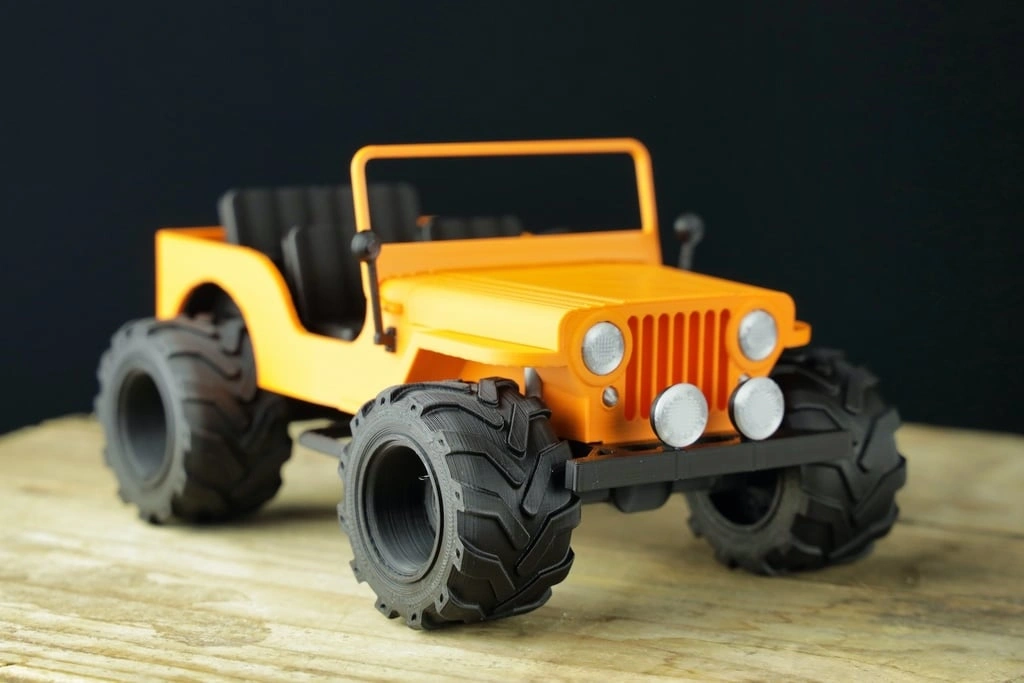How Many Items Can 1KG of PLA Filament Print? Here is a Quick Look
Jan 26,2024 | 3D4Create
As 3D printers become an affordable and accessible tool for everyone from hobbyists to large corporations, 3D printing has exploded in popularity in recent years. One of the most common materials used in 3D printing is PLA plastic filament.
Spools of PLA filament come in a range of sizes, with 1 kg being a common standard size. But how long will a 1kg spool of filament last when used with a 3D printer? Let's take a detailed look at how to estimate PLA filament usage.

I. What is PLA Filament?
PLA or Polylactic Acid is a biodegradable plastic derived from renewable resources like corn starch or sugar cane. It is one of the most widely used materials for desktop FDM (Fused Deposition Modeling) 3D printers.
Compared with other plastics used in 3D printing like ABS, PLA is easier to print with and does not require a heated print bed. It also has less fumes and odors when printing. PLA plastic is available in diversified colors with different finishes like glossy or matte.
The most common diameter for PLA filament is 1.75mm, but 2.85mm filament is also available. PLA filament used for 3D printing comes wound on spools, with standard spool sizes being 1kg, 0.5kg, or 2.85kg.
II. Factors That Impact PLA Filament Usage
How long a 1kg spool of PLA filament will last depends on several factors:
- Printer Settings - Settings like layer height, infill percentage and pattern, print speed, and print temperature affect how much filament is used per print. Higher infill uses more plastic, while thinner layers and slower print speeds result in higher usage.
- Model Complexity - Prints with more intricate details, curves, and overhangs consume more filament compared with simple geometric shapes. This is because more support material is required.
- Model Size - Larger models require greater lengths of filament. Printing multiple small models from a spool will yield more prints than printing a single large model.
- Experience Level - New 3D printer users tend to waste more filament on failed prints before dialing in optimal settings. Experienced users get successful prints more consistently.
- Filament Density - The density and thickness consistency of the filament itself impacts spool life. Higher-quality filament is more consistent and prints efficiently.

3D Printed Articulated Elephant with PLA
III. How Can I Estimate Filament Usage
In general, a full 1kg spool contains over 335 meters of filament which is enough to print around 20-30 average-sized models which are 5-6 inches tall with 15-20% infill. The exact number can vary substantially based on the complexity and size of the models.
Therefore, tracking your filament usage per model is the best way to estimate how many you can print with 1kg. There are a couple of ways to estimate how much filament a print will use:
- Filament calculators - Some specialized calculators allow you to enter the parameters of your model and print settings to get an estimate of the filament usage.
- Printer software estimates - Many printer host software like Cura provide filament usage estimates for the model when you slice it.
- General rule of thumb - For PLA filament, plan on around 30-60g of filament per 6-inch tall model printed with default settings. Smaller models use less, while bigger models require more.
- Length of filament - A 1kg spool of 1.75mm PLA filament contains approximately 560-570 meters of filament. This is enough to print about 20-30 mid-sized models.
- Weighing spools - You can weigh the spool before and after printing a model to get a real-world figure for usage which can be extrapolated for future prints.
IV. Getting the Most out of Your Filament
To maximize the lifespan of a 1kg spool of filament, follow these best practices:
- Tweak print settings for efficiency - Enable settings like "sparse infill" and "infill before walls" to reduce wasted material inside prints.
- Use higher infill only where needed - Limit top/bottom infill to the minimum required for structural integrity to save plastic.
- Design smart models - Design models with less mass and redundancy to require less material overall.
- Print multiple small items - Printing several small items uses less filament compared with printing a single large object.
- Use lower layer heights - Drop layer height to 0.12mm or lower to reduce vertical filament usage, with minimal impact on print quality.
- Recycle scrap plastic - Any unused filament, rafts/skirts, and failed prints can be recycled by re-extruding into usable filament.
V. Conclusion and Key Takeaways
On average, a 1kg spool of good quality PLA filament will yield around 700-800g of printed output. This is equivalent to printing roughly 20-30 mid-sized models at 6 inches tall with default slicer settings.
FAQS
1. Does the infill percentage impact how many items I can print per spool?
Yes, a lower infill usually allows you to print more items from a spool. A 10% infill will yield more prints than a 40% infill given the same object. But strength is reduced.
2. What small items or parts maximize yield per spool?
Small detailed prints like game pieces, jewelry, and parts with thin walls give you the most prints per spool. Test prints also use very little filament.
See Also
Everything You Need to Know: How Many Meters of Filament in 1kg
The Secret to Cheaper Toys? - 3D Printing
Getting the Best Results: Optimal 3D Printing Temperatures for PLA, ABS, PETG, TPU, Nylon


